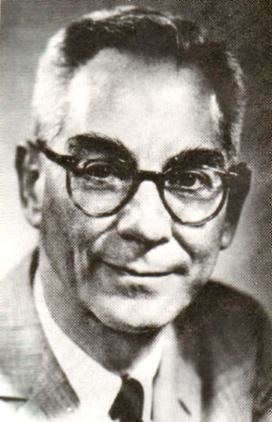Name Raymond Mindlin Role Mechanician | ||
 | ||
Books An Introduction to the Mathematical Theory of Vibrations of Elastic Plates Awards | ||
Raymond d mindlin lecture 2012 prof y f dafalias
Raymond David Mindlin (New York City, 17 September 1906 – 22 November 1987) was an American mechanical engineer, Professor of Applied Science at Columbia University, and recipient of the 1946 Presidential Medal for Merit and many other awards and honours. He is known as mechanician, who made seminal contributions to many branches of applied mechanics, applied physics, and engineering sciences.
Contents
- Raymond d mindlin lecture 2012 prof y f dafalias
- Raymond D Mindlin Wikipedia audio article
- Education
- Career
- Awards and honors
- Contributions to research
- Service
- References
Raymond D. Mindlin | Wikipedia audio article
Education
In 1924 he enrolled at Columbia University, where he received a B.A. followed by a B.S. in 1931, and in 1932 by a C.E. and the Illig medal for "proficiency in scholarship." During his graduate study, Mindlin attended a series of summer courses organized by Stephen Timoshenko in 1933, '34, and '35, and there is no doubt that the experience at the University of Michigan served to confirm him in his choice of his life's work.
Career
For his doctoral research Mindlin set himself a fundamental problem in theoretical elasticity: determining the stresses in an elastic half-space subjected to a sub-surface point load. The results, nowadays referred to as "Mindlin's problem", represent a generalization of the two classical 19th century solutions respectively associated with the names of Kelvin and Boussinesq, and have become the basis for analytical formulations widely employed in geotechnical engineering. His paper was published in Physics (now the Journal of Applied Physics) in 1936, the year Mindlin received his Ph.D. degree.
Mindlin remained an assistant for another two years, at which point he was elevated to instructor in civil engineering, and only in 1940 did he receive promotion to assistant professor.
In 1942 Mindlin was co-opted by the Applied Physics Laboratory in Silver Spring, Maryland, an institution engaged in naval ordnance work, where he contributed in the development of the proximity fuze. For his part in its success, he was presented with the Presidential Medal for Merit.
He came back to Columbia in 1945 as an associate professor, and two years later attained the rank of professor. In 1967 he was appointed James Kip Finch Professor of Applied Science until his retirement in 1975.
Mindlin died on November 22, 1987, in Hanover, New Hampshire.
Awards and honors
Contributions to research
The Collected Papers of Raymond D. Mindlin (2 vols, Springer-Verlag, 1989) collected 129 papers authored or co-authored by Mindlin. The major contributions of Mindlin were summarized in 8 papers by his students and friends in a book dedicated to his retirement, R.D. Mindlin and Applied Mechanics (Pergamon, 1974). These include:
Service
Mindlin served with devotion the profession which he made his life's work, through his research, his teaching, his advisory capacity to numerous government agencies, and his activities in various scientific and technical societies. Among the latter, mention is warranted of the following positions he held at various times:
Also, he was member of: the U.S. National Committee for Theoretical and Applied Mechanics; the General Assembly of the International Union of Theoretical and Applied Mechanics (IUTAM); the American Physical Society.
